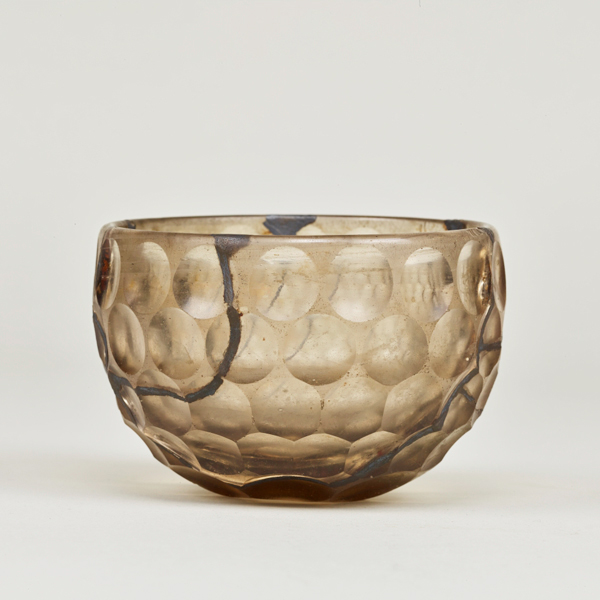I'm focusing here on a glass bowl, one of Shosoin's "treasures".
My report here owe much to a pre-existing blog, studied and compiled by whose webname is "bahram".
I also owe to Tokyo National Museum site.
Pictures in this page are linked to Nara National Museum site(past exhibitions) and
Tokyo National Museum site(blog).
Your at-hand images are downloaded directly from those two sites, so, please take care to those sites' policies as for the handling of images below.

In Shosoin
Details how the glass bowl came into Shosoin's collection is not known well.
On the occasion Shosoin was built and first donations were made, the empress made a list of them, but the glass bowl was not in the list.
So, how and when it came into the collection is ambiguous.
Apart from that, another glass bowl was found in one of ancient tombs in this country, which is now enlisted in Tokyo National Museum's collection.
Discovery of which is said to have been in Edo-period, so detail is also insufficient.

In Tokyo National Museum
It is apparent that these two are much alike. 18 dimples for the whole circumference as 4 stages, 7 below them, 1 at the bottom.
Abstract process is also easy to guess. First, make a glass bowl as a molten glass with smooth surface, and after cooled down, glind dimples.
How the glinders were drived is uncertain as electric-motors were not available at that time.
They are of a good industrial design that reconciles beauty and practicability. Many dimples enable user's finger-tips settle peacefully.
The dimples must have reduced accidental failures also while washing. And the beauty is as to lose words.
It was 1959 when Shinji-Fukai who was in an investigation commitee stopped by an antique shop in Tehran and found a glass tableware of the same design.
After that, it came to be clear that there are thousands of antique bowls of the same design in Iran.
Most of them were stolen ones from old tombs. It is said one is also in western China.
But it is said none of them are as whole as Shosoin one, and it is regarded the best one in the world.
It is said so. I don't know the reality.
When daily used glasses accumulate cloud, small injuries might be caused on them.
But if you leave it for several years in the air, and after that period wash it for reusing, it sometime recovers its shiny surface. It's mysterious.
For plastics, annealing is known. Same phenomenon may exist for inorganic glasses if time is long.
Manufacturing workshop is estimated to have been in Persia, in Sassanid dynasty. The place is now in Iraq.
My first idea was that it might have been just a mass-produced one, but there is an estimation that they are not.
It is said Persian king bestowed the tableware when he had a meal with his feudal lords.
I imagined a feudal lord take home his tableware polluted with remain of his meal. Onto his camel? No, that is not the case.
Possibly, one of the king's retainers washed his bowl for him before he leaved. Or, another bowl of the same design was standing by.
Anyway, it was a feudal lord's valuable treasure that is buried with him on his death.
One of them was accidentally carried to the east, and have become a precious precious "treasure" of the emperor.


